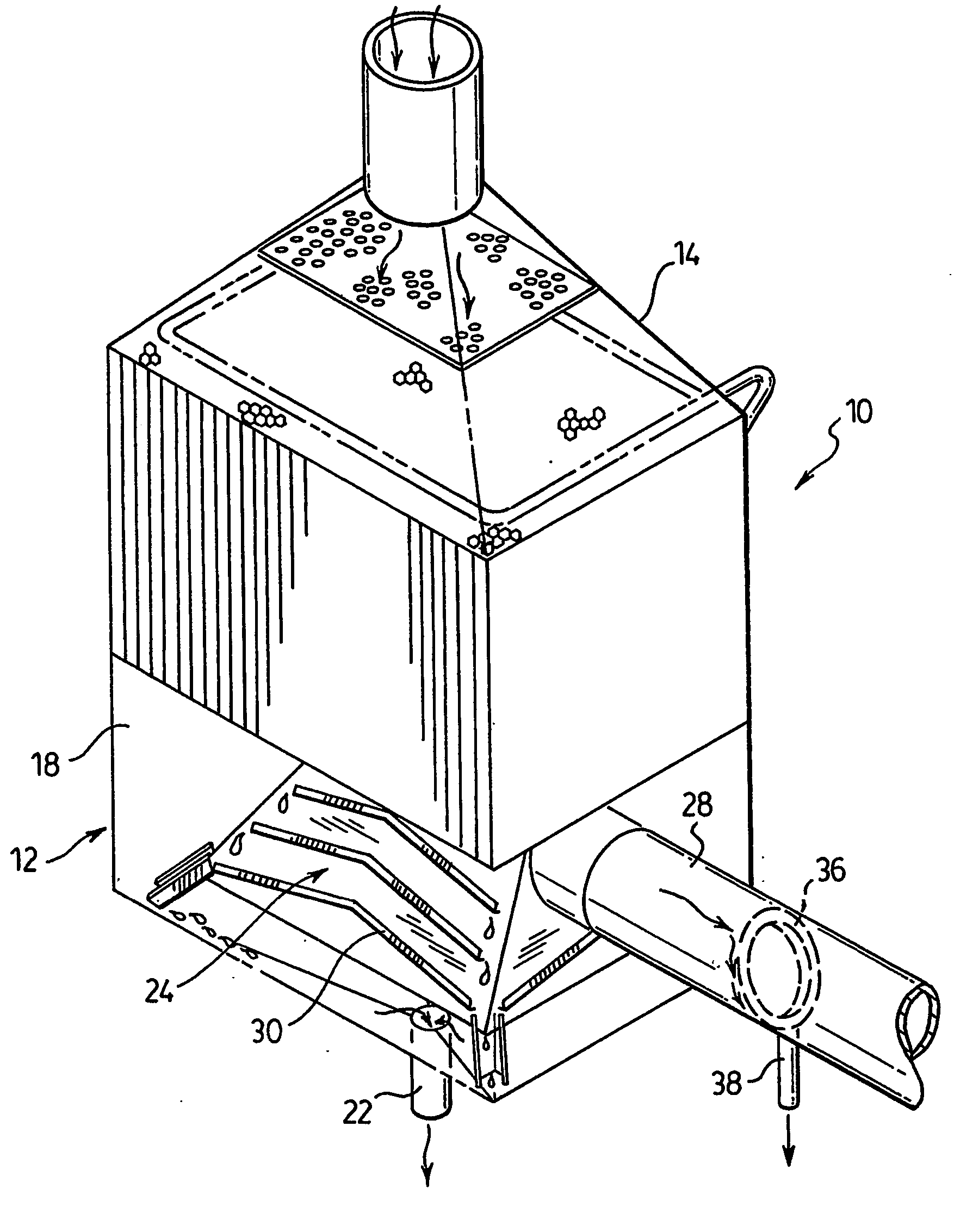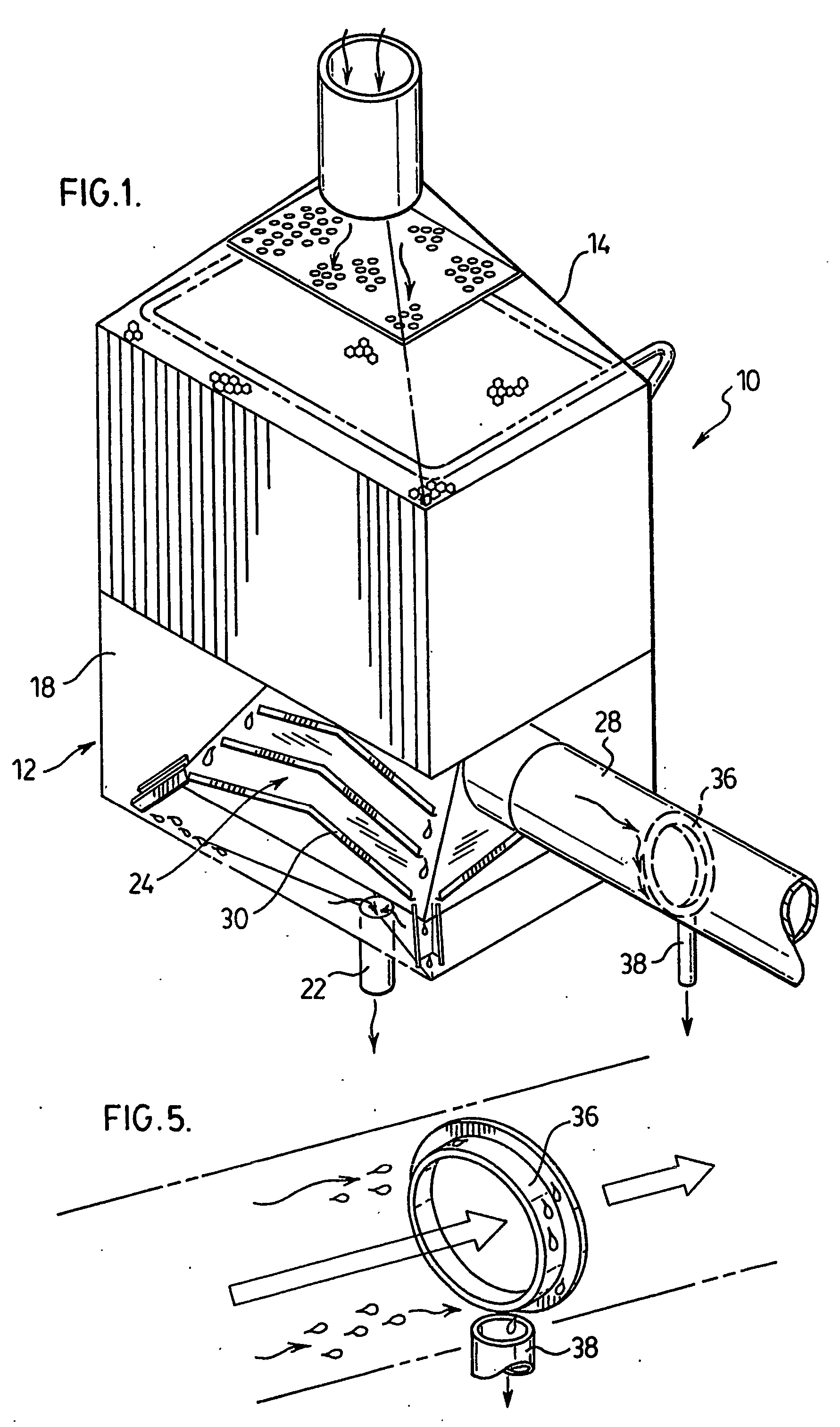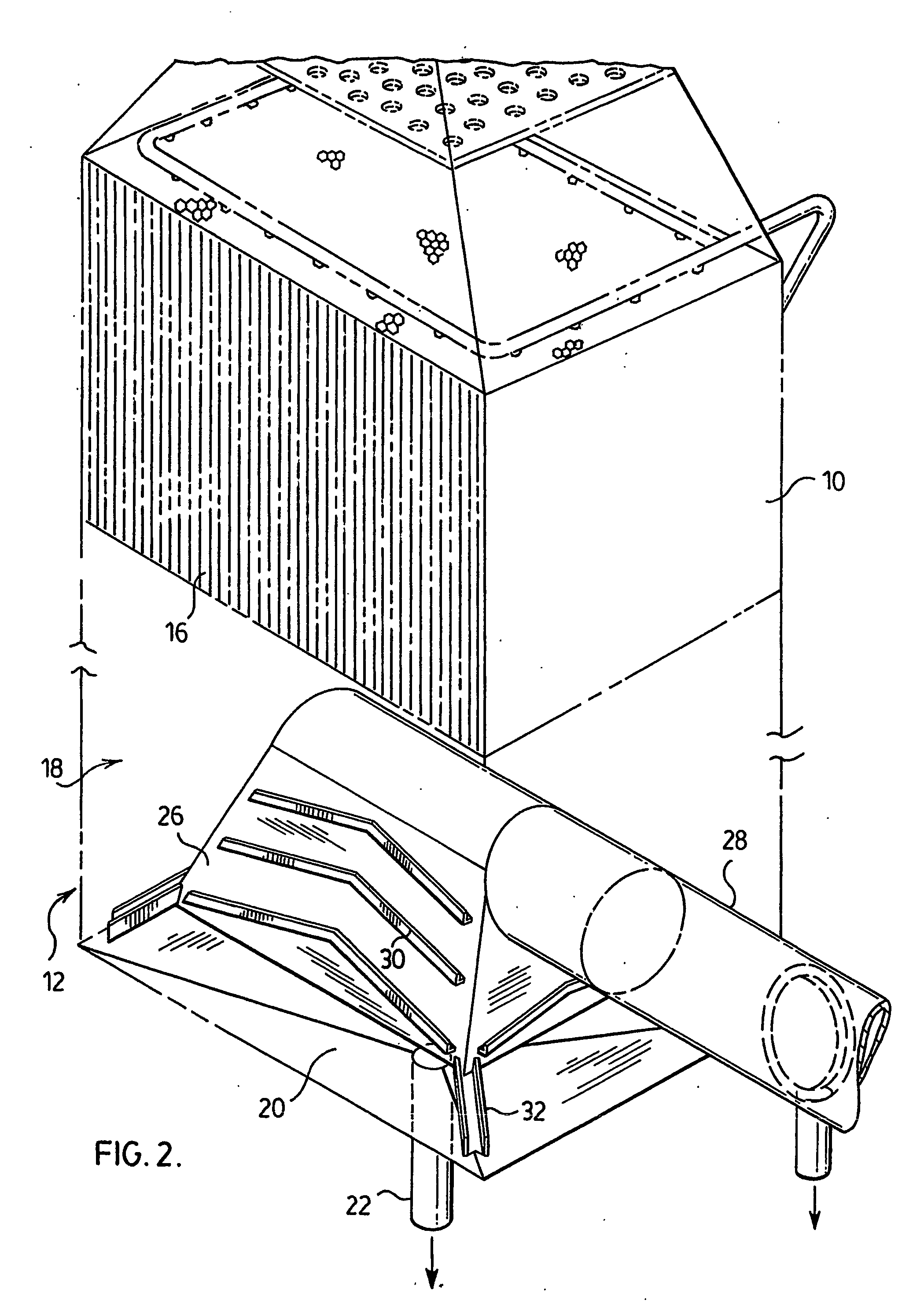Mist elimination hood
a technology of elimination hood and hood, which is applied in the direction of auxillary pretreatment, separation process, dispersed particle separation, etc., can solve the problems of droplet re-entrainment and carry-over, pad often suffer plugging problems, and plugging problems, so as to prevent liquid droplet carry-over
- Summary
- Abstract
- Description
- Claims
- Application Information
AI Technical Summary
Benefits of technology
Problems solved by technology
Method used
Image
Examples
example 1
[0025] This Example illustrates the results obtained using a laboratory scale WESP structure.
[0026] A ⅛ scale model of a commercial rectangular cross-section WESP structure was set up as illustrated in FIGS. 1 to 5. The model extended from the WESP inlet, through the collection tubes and into the outlet hood and duct. The humidification spray nozzle was simulated using a single multi-orifice air atomized spray nozzle operated at 50 to 60 psi to ensure good atomization and fine droplet size.
[0027] In the absence of the gutters provided in the hood, there was strong visual evidence of a significant amount of water being carried into the outlet duct, particularly during a tube wash operation. However, with the addition of the water collection gutters to the outside of the hood, the amount of liquid observed to be carried over was significantly reduced.
[0028] The liquid carryover was determined by droplet counters and the average carryover was 0.000764 US gpm / ft2. With the wash spray...
example 2
[0030] This Example illustrates the results obtained using a further laboratory scale WESP structure.
[0031] A ⅙ scale model of a circular cross-section WESP structure was set up as illustrated in FIGS. 6 to 8, with the gutters in place. The model extended from the horizontal inlet duct through the WESP vessel to the outlet duct. The humidification spray nozzle was a single multiple-orifice air-atomized spray nozzle operated at 50 psig to ensure good atomization and fine droplet size with a mean of 27 microns.
[0032] The WESP flush sprays were simulated by a 8 Bete WL-¼ 60 degree hydraulic nozzles mounted on a ring header at equal spaces. During wash simulation, the header was operated at a flow rate of 6 usgpm at approximately 10 psig.
[0033] The liquid carryover to the outlet duct was determined by droplet counters. With only the inlet spray operating, the carryover was 4.43×10−10 usgpm / ft2 with an average droplet size in the outlet duct of 3.2 microns. With only the flush sprays ...
example 3
[0035] This Example illustrates the results obtained using a plant scale WESP structure.
[0036] A rectangular full scale mist eliminator hood structure as illustrated in FIGS. 1 to 5 was installed to replace an existing mesh pad arrangement which was causing operational problems due to plugging and free moisture carryover from the WESP.
[0037] The installation reduced moisture carryover to values below detection as measured using EPA Method 5 and has been operating for more than eight months without maintenance or interfering with production.
PUM
 Login to View More
Login to View More Abstract
Description
Claims
Application Information
 Login to View More
Login to View More - R&D
- Intellectual Property
- Life Sciences
- Materials
- Tech Scout
- Unparalleled Data Quality
- Higher Quality Content
- 60% Fewer Hallucinations
Browse by: Latest US Patents, China's latest patents, Technical Efficacy Thesaurus, Application Domain, Technology Topic, Popular Technical Reports.
© 2025 PatSnap. All rights reserved.Legal|Privacy policy|Modern Slavery Act Transparency Statement|Sitemap|About US| Contact US: help@patsnap.com



